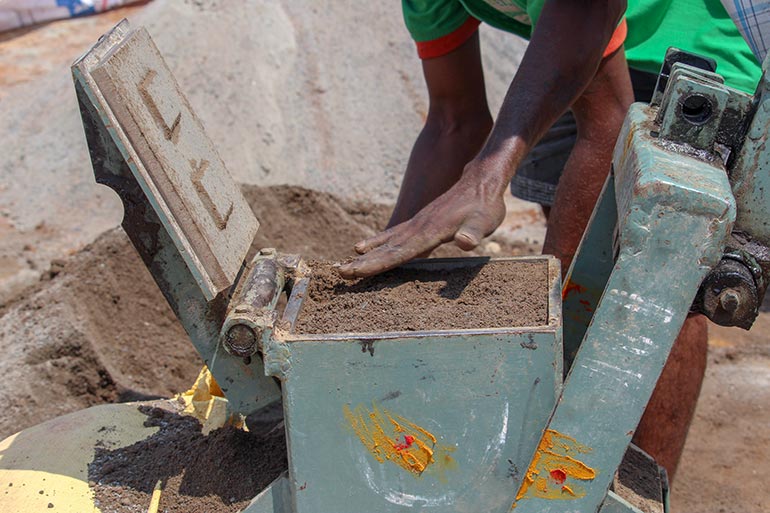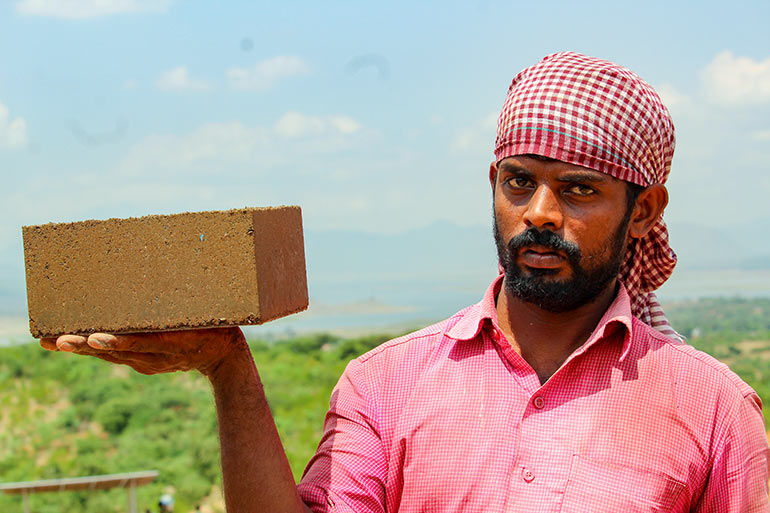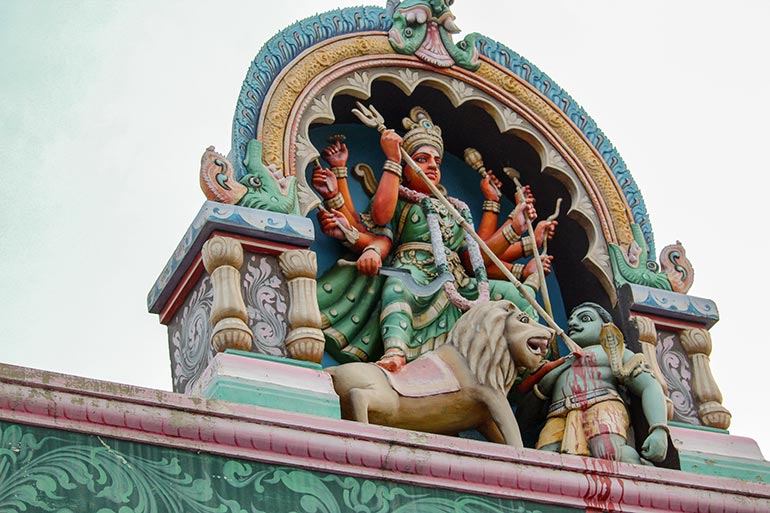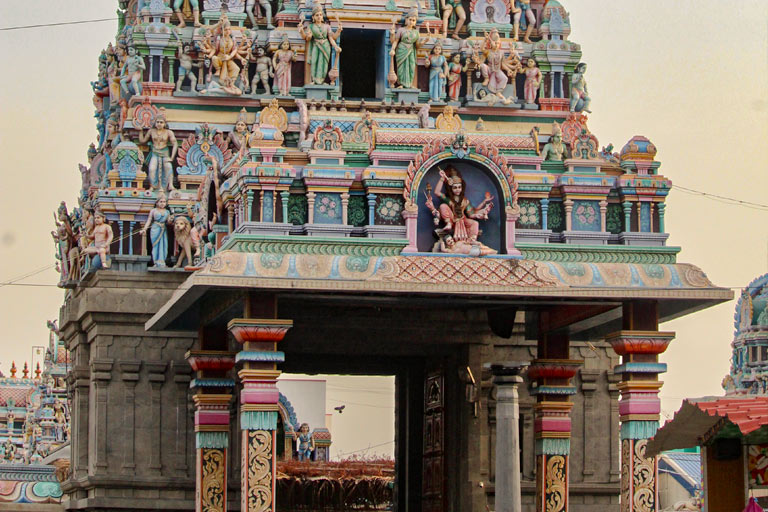Trip Report: Alternative Summer Break in India
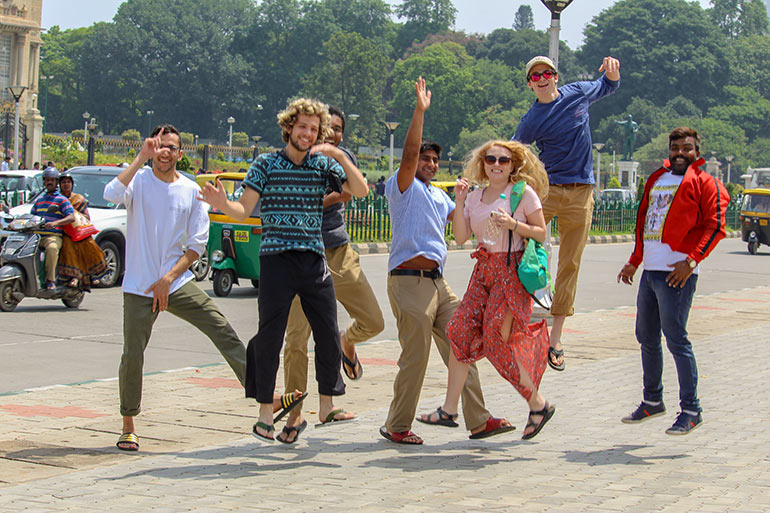
The Tickle College of Engineering sponsored the Alternative Summer Break to India from May 13 – 21, 2018; it was the first Global Initiatives trip to the continent of Asia, and the 20th trip for the program. Participating in the trip were Nishant Lokanathan, sophomore aerospace engineering major, Tarun Kukreja, freshman mechanical engineering major, Manan Desai, sophomore computer science major, Cameron Hale, junior materials science major, Makayla Hyde, sophomore chemical engineering major, and Mitchell Langley, sophomore biomedical engineering major, all Honors students at the University of Tennessee, Knoxville.
The Republic of India is in South Asia. It is the seventh-largest country in the world by area, the second most populous, with a population of 1.2 billion people, and the most populous democracy in the world. The Indian subcontinent is the birthplace of four of the world’s major religions, those being Hinduism, Buddhism, Jainism, and Sikhism. Throughout the history of India, religion has been an important part of the country’s culture.
Great Britain ruled the Indian subcontinent beginning in 1858. The system of governance, known as the British Raj, was instituted when the rule of the East India Company was transferred to the Crown in the person of Queen Victoria, who in 1876 was proclaimed Empress of India. India gained its independence in 1947 when the British provinces of India were partitioned into two sovereign dominion states: the Dominion of India and the Dominion of Pakistan. As a result of previous British rule, many of India’s citizens speak English, street signs are in several languages including English, and cars drive on the left side of the road.
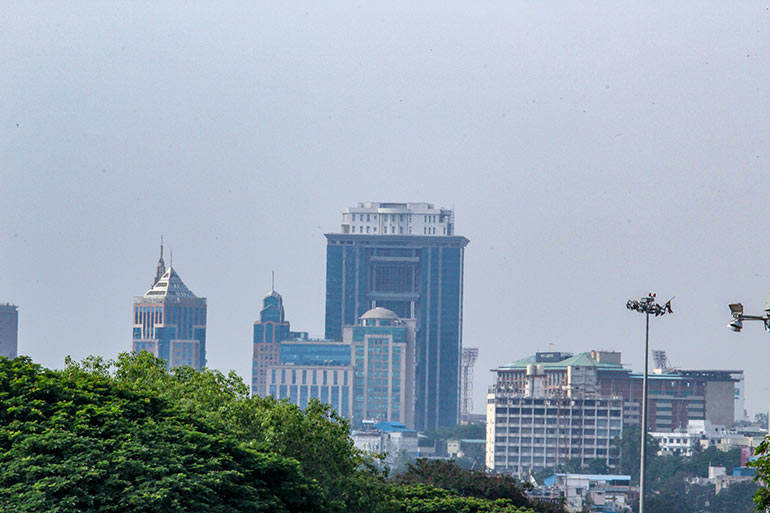
The trip began in the city of Bangalore, the Anglicized version of its official name, Bengaluru. The capital of the Indian state of Karnataka, it has a population of over 10 million, making it the third most populous city in India. Located in the southern part of the country on the Deccan Plateau, its elevation is over 900 meters, or 3,000 feet above sea level, the highest of India’s major cities. Sometimes referred to as the Silicon Valley of India, or IT capital of India, Bangalore is the nation’s leading information technology exporter. The group arrived in the early hours of the morning at the Kempegowda International Airport, named after Kempe Gowda I, the founder of Bangalore. Spread over 4,000 acres, is owned by a public-private consortium, and opened in 2008 as the first fully solar-powered airport in the state.
The next morning, the group left the city for a four-hour drive to the countryside, to the tiny village of Vattalpatti, in the neighboring state of Tamil Nadu. The accommodations were on a mountain top with views of the hilly landscape and a lake fed by spillage from the nearby Mettur Dam. Upon arrival, the group was welcomed by Mr. Darmalingum, the talavar, or leader of the village, and serenaded by a native band of musicians; their instruments consisted of two unusual drums, silver hand instruments similar to maracas, and a shennai, or long horn. The celebration included lively dancing and the presentation of flower wreath/necklaces for the visitors.
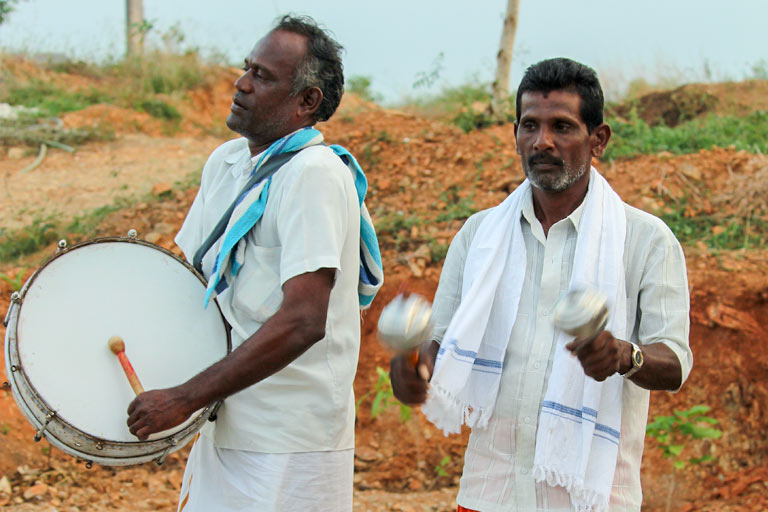
Global Environs, an NGO promoting sustainable and eco-friendly living, is overseeing the service project, which will eventually be an education center and farm and fruit orchard to benefit a local children’s home. It will have a conference center and accommodations for guests. At present, it is a hill top site with a brick-making operation, a tiny reservoir, a shed and a solar collection and charging station.
The group learned to make bricks by hand alongside locals working there. The bricks are made from soil/mud from the site, dry concrete mix (called “dust” by the workers) and water. The mixture is put into a form and then pressed with a spring lever, a practice which turned out to be much more difficult and labor-intensive than it appeared. They also planted around 200 trees which will serve to eventually shade the roadway as well as beautify the surroundings. Finally, they helped to clear an area that will be a holding pond for water naturally running off the hillside during rains.
They served as the test group for the new accommodations nearby, of which they were the first guests. Three traditional Indian meals were cooked on-site each day by Indian chefs. The food consisted of recipes from both the north and south of the country, as well as Indochina. A yoga class and modern dance class were held; in addition, the cook offered a class right in the kitchen of the accommodations. he group learned to cook Dahl Fry, made from a common grain, Alu Mater, a potato-pea curry, chapatti, a bread similar to pita, gobi Manchurian, a Hindu cauliflower dish, and Chicken Fry. Spices used included jeera, or cumin powder, turmeric, leaves from the Indian Curry Tree, chili powder, and fresh coriander leaves. Food cooked in a wok-like implement is exposed to an extreme flame to impart a smoky flavor.
The same day, an Ayurvedic practitioner by the name of Hepsibah addressed the group on the topics of natural healing and treatments for common ailments, originating over 3,000 years ago, and still in use today. Ayurveda is one of the world’s oldest holistic healing systems and is based on the belief that health and wellness depend on a delicate balance between the mind, body, and spirit. The term “Ayurveda” combines the Sanskrit words ayur (life) and veda (science or knowledge). Ayurveda is primarily plant-based but uses minerals and metals as well, and is considered “alternative” medicine in the Western world. Key concepts of Ayurvedic medicine include universal interconnectedness of people, health, and the universe, the body’s constitution, or prakriti, and life forces, or dosha.
While in the area, the group visited the Mettur Dam and nearby Ellis Park, and passed through the village of Mechery on the way. In the village as well as back in the city, it was not unusual to see three individuals riding a single motorcycle. Motorcycles appear to outnumber cars and trucks by at least 5:1. The village has many colorful houses, several brick-making facilities, giant religious statues, beautiful hand-constructed rock walls, and cows wandering about freely. It was not uncommon to occasionally be in the lane of currently oncoming traffic, as passing other motorists is typical.
The Mettur Dam is one of the largest in India. Built in 1934, the dam took nine years to complete. The United Kingdom provided funds for the dam and evacuated the people of Nayambadi village where the dam was eventually sited. When the water level of the reservoir recedes, age-old Hindu temples and churches emerge from it as proof of the former village. Maximum height and width of the Dam are 214 and 171 feet, respectively. Its total length is 5600 ft. The Dam receives inflows from its own catchment area and other dams located in the state of Karnataka.
Ellis Park is located at the base of the dam and maintained by the Tamil Nadu Public Works Department. It provides irrigation and drinking water facilities for more than 12 districts of Tamil Nadu and hence is revered as the life-giving feature of Tamil Nadu. The dam creates Stanley Reservoir. The dam, the park, the major hydroelectric power stations, and hills on all sides make Mettur a tourist attraction.
After observing the dam, the visitors proceeded to the Pathrakaliamman kovil, an antique temple believed to have specific divine power; it is dedicated to twelve of the Hindu gods. A blessing ceremony was taking place during the visit, with visitors bringing flowers and fruit in baskets. Visitors are asked to remove shoes before entering and no photos are allowed. Both inside and out are intricately decorated with images of various and colorful deities.
As a contrast to the old traditional temple, once back in Bangalore, the group also visited the Sri Radha Krishna Temple (in the Kannada language ಶ್ರೀ ರಾಧಾ ಕೃಷ್ಣ ಮಂದಿರ), which has deities of Radha and Krishna, located at Rajajinagar in North Bangalore. It is one of the largest ISKCON temples in the world, ISKCON being the International Society for Krishna Consciousness, or the Hare Krishna movement. The temple is a huge cultural complex that was inaugurated in 1997. There is a gold-plated dhwaja-stambha, or flag post, 17 meters (56 feet) high and a gold plated kalash shikara, which is the rising tower in Hindu temple architecture, standing 8.5 meters (28 feet) high. A huge and ornate gold-plated altar area is the focal point once one has navigated through the passageways to enter the main part of the temple. On the way in, a Hindu chant to Hare Krishna is repeated 107 times. Again, neither shoes nor photography are allowed inside.
A walking tour of a part of Bangalore passed the buildings of the Supreme Court and the Senate. Next door, the life-size bronze statue of a meditating Mahatma Gandhi, unveiled in 2014, sits next to the imposing Vidhana Soudha, the state secretariat, or Parliament House. It is an impressive 27 feet high and sits atop a 13-foot pedestal.
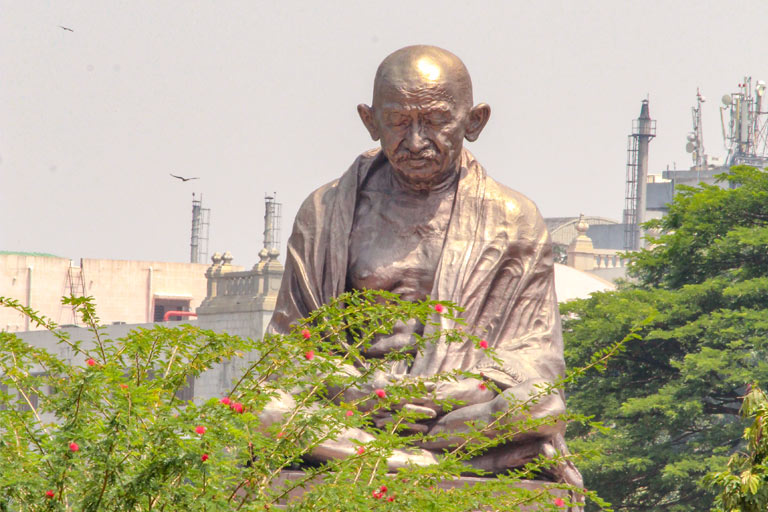
Another stop in Bangalore was at the Lalbagh (meaning The Red Garden in English) Botanical Gardens, a well-known botanical garden in southern Bangalore. It has a famous glass house dating from 1889 which hosts two annual flower shows. Lalbagh has India’s largest collection of tropical plants, a lake, and walking trails. It was commissioned in 1760 and covers 188 acres. The garden has over 1,000 species of flora, as well as trees that are over 100 years old, some in Bonsai form. The park has some rare species of plants brought from Persia, Afghanistan and France. With an intricate watering system for irrigation, this garden is aesthetically designed, with lawns, flowerbeds, lotus pools and fountains. The Lalbagh Rock, one of the oldest rock formations on earth, purportedly dating back 3,000 million years, is another attraction at the site. Known as Peninsular Gneiss, a term used to highlight the metamorphics found all over the Indian Peninsula, the Geological Survey of India identified one of the best exposures of this rock mass at Lalbagh and declared it a National Geological Monument.
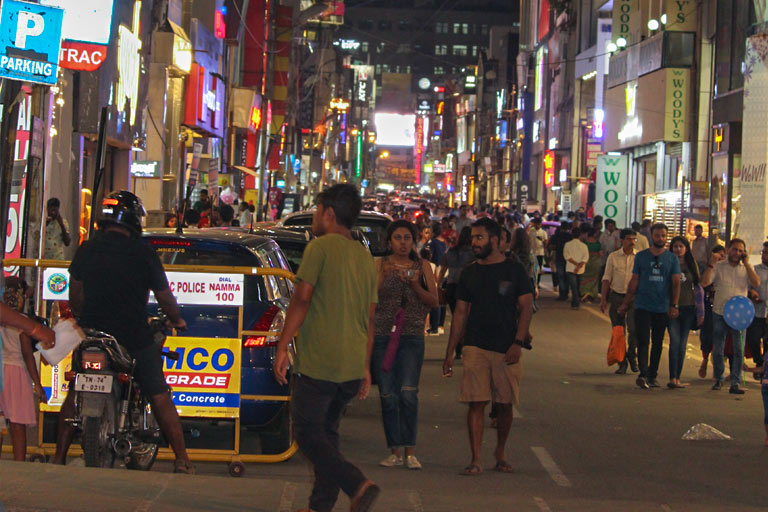
The final activity consisted of shopping in the handcraft stores located in the commercial district of Bangalore, and another traditional Indian dinner in downtown Bangalore before departing for home on a 26+ hour journey.
